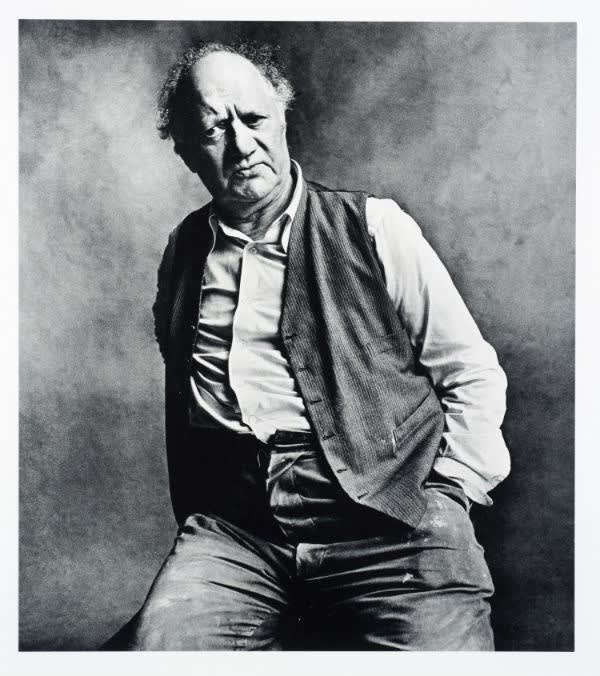Sculptor Jacob Epstein was born into a relatively prosperous family of Russian/Polish-Jewish immigrants in New York City, USA on 10 November 1880, but as a teenager rejected the Orthodoxy of his upbringing. From 1893–98 he attended classes at the Art Students' League and he eventually turned to sculpture, working in a bronze foundry (1901–2). On the proceeds of his first professional commission to illustrate Hutchins Hapgood’s The Spirit of the Ghetto (1902), he sailed to Europe. In Paris he studied at the École des Beaux-Arts (1902–3) and the Académie Julian (1903–4), sharing the appreciation for Indian and West African art traditions.
Epstein moved to London in 1905 and in 1907 he received his first major British commission, creating 18 nude sculptures for the facade of the British Medical Association Building (now Zimbabwe House) on the Strand. This commission, like many of Epstein’s other early works, was highly controversial and criticised as indecent. Epstein’s second public commission to carve Oscar Wilde’s tomb for Père Lachaise cemetery, Paris (completed in 1912). A champion of direct carving, he was also associated with the short-lived Vorticist group, co-curated the so-called 'Jewish Section' at the Whitechapel Art Gallery's 'Review of Modern Movements', with David Bomberg in 1914, and was a co-founder of the London Group. During the First World War, Epstein was conscripted, but was discharged, without seeing active service following a breakdown in 1918.
Epstein's work often challenged prevailing notions of sexuality and beauty and favoured the non-European model. His public commissions continued to attract controversy including the carved relief Rima (1924–5, Hyde Park), the monumental figure group, Night and Day (1928–9) and later monumental carvings including Genesis (1930), Ecce Homo (1934–35), and his autobiographical Jacob and the Angel (1940-41, Tate). However, his portrait heads, usually cast in bronze, were always in demand. During the Second World War was commissioned by the War Artists’ Advisory Committee to execute six portrait busts including one of Winston Churchill. Epstein was knighted in 1954.
Epstein completed his large bronze Bowater House group for Edinburgh Gate, Knightsbridge (1958–9) on the day that he died in London, England on 21 August 1959; he was buried in Putney Vale cemetery. In 1980, his centenary year, restropsectives were held at Ben Uri Gallery, Birmingham Museum & Gallery and Tate. More than 300 of his works are in UK public collections including the Ben Uri Collection, the National Portrait Gallery, Tate and the V&A.


